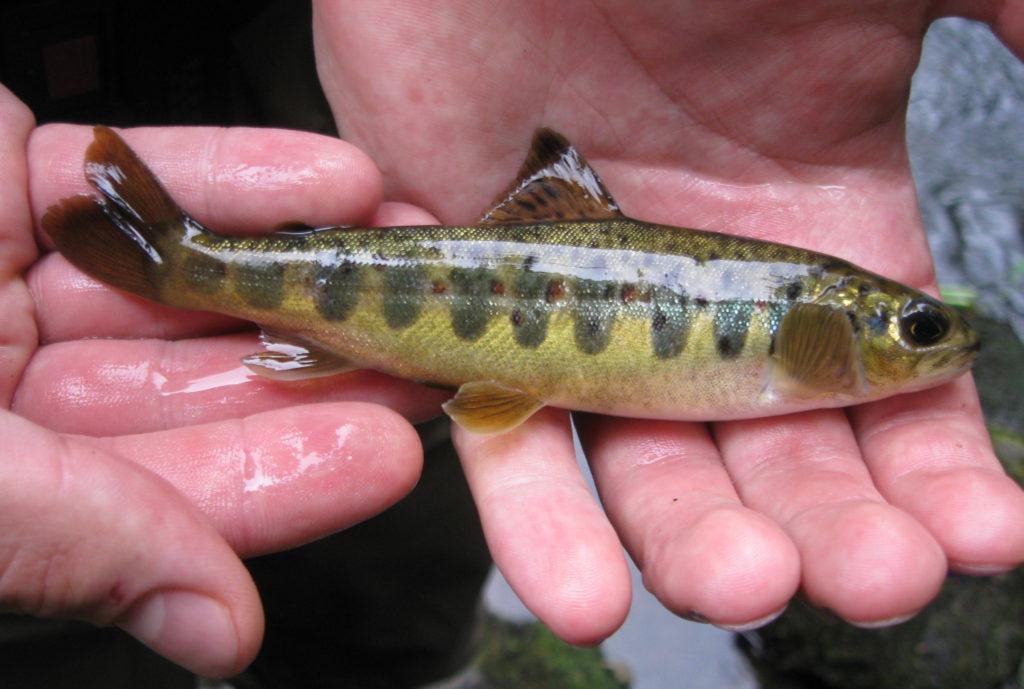SALAR
Overview of the state of salmon (Salmo salar) and sea trout (Salmo trutta) populations in rivers flowing to the Baltic Sea

Project aimThe aim of the project was to make an inventory and classification of the historical and existing Baltic rivers with salmon and/or sea trout populations and suggest measures for restoration plans and active conservation for selected wild salmon river populations, as adopted in the HELCOM Baltic Sea Action Plan (BSAP).
The project compiled and analyzed data on the state of and pressures on salmon and sea trout populations, the quality of river waters and reproduction habitats as well as the possibilities for salmonid passage in rivers. The project provided a classification of salmon and sea trout rivers based on agreed criteria and the compiled information.
The project was funded through a co-financing agreement between the European Commission (DG MARE) and HELCOM.
Project outcomes and useThe major outcome of the project were recommendations and prioritization of measures in the rivers that are needed for the improvement of the status of salmon and sea trout populations. The sea trout populations in the Baltic rivers had not been yet the subject of a common project. The project was groundbreaking also in that it offers a holistic view on the state of salmon and sea trout in the Baltic rivers and identified the measures needed for their recovery and development. This will allow for the development of international and national programs for the funding and systematic realization of these actions.
The Contracting Parties to HELCOM will use the results of the project as a basis when implementing the actions of the HELCOM BSAP concerning salmonids and other actions for the recovery and development of salmon and sea trout populations. The BSAP actions are the identification of at least ten endangered/threatened wild salmon populations and their conservation and the introduction of native salmon populations in at least four potential salmon rivers. Other important actions are the development of restoration plans for migratory fish and measures to promote sustainable fisheries and the strengthening of salmon and sea trout populations.
How the goals were achievedThe work was based on the best available data from the fisheries and environment administrations in the Contracting Parties. The Contracting Parties nominated national experts responsible for gathering, analyzing and submitting data for the project. The nominated experts at the Project’s kick-off meeting in Helsinki on 27-28 January agreed on a questionnaire and response template to be used in a data enquiry.
The final data compilation, analyses and drafting of the report and recommendations were carried out by the HELCOM Secretariat. In order to avoid duplication and to make use of existing knowledge and activities, the scientific work was carried out in coordination with a relevant ICES working group. This was also ensured by the Finnish Game and Fisheries Research Institute (FGFRI), which in the capacity as a contracted third party gave advice for the project. A similar role was taken by the International Council for the Exploration of the Sea (ICES).
Interim project outcomes and draft reports were considered by the HELCOM Baltic Fisheries and Environmental Forum and reported to HELCOM Nature Protection and Biodiversity Group (HELCOM HABITAT) and other HELCOM bodies.
Project scheduleThe project was carried out in 11 months starting in January 2010. Following the kick-off meeting the nominated experts have compiled, analyzed and submitted data. The data was processed in the HELCOM Secretariat and included in reports.
The final report was published in the HELCOM’s Baltic Sea Environment Proceedings (BSEP) and relevant maps showing the main results are displayed on the HELCOM web site (Helcom Map Service).
